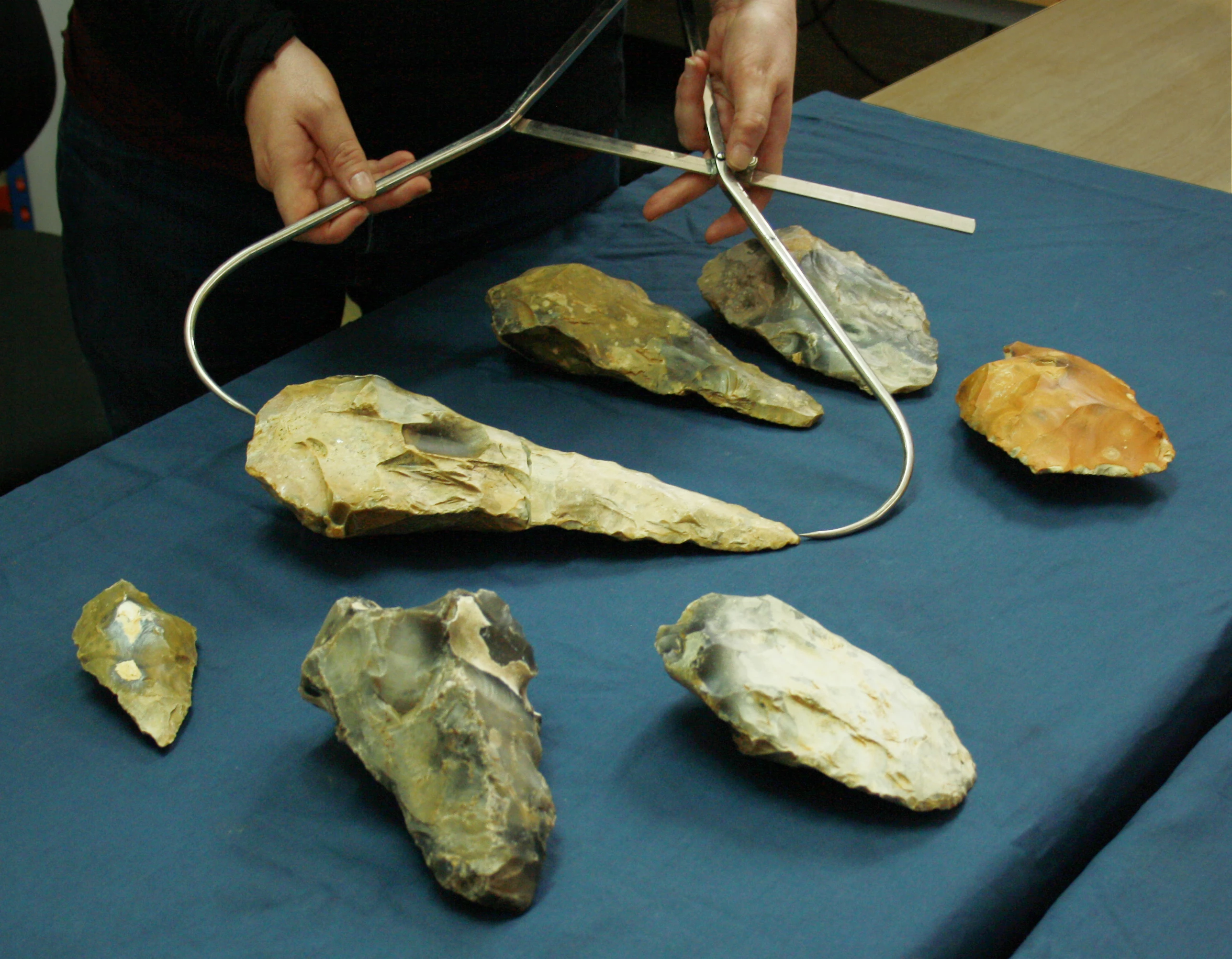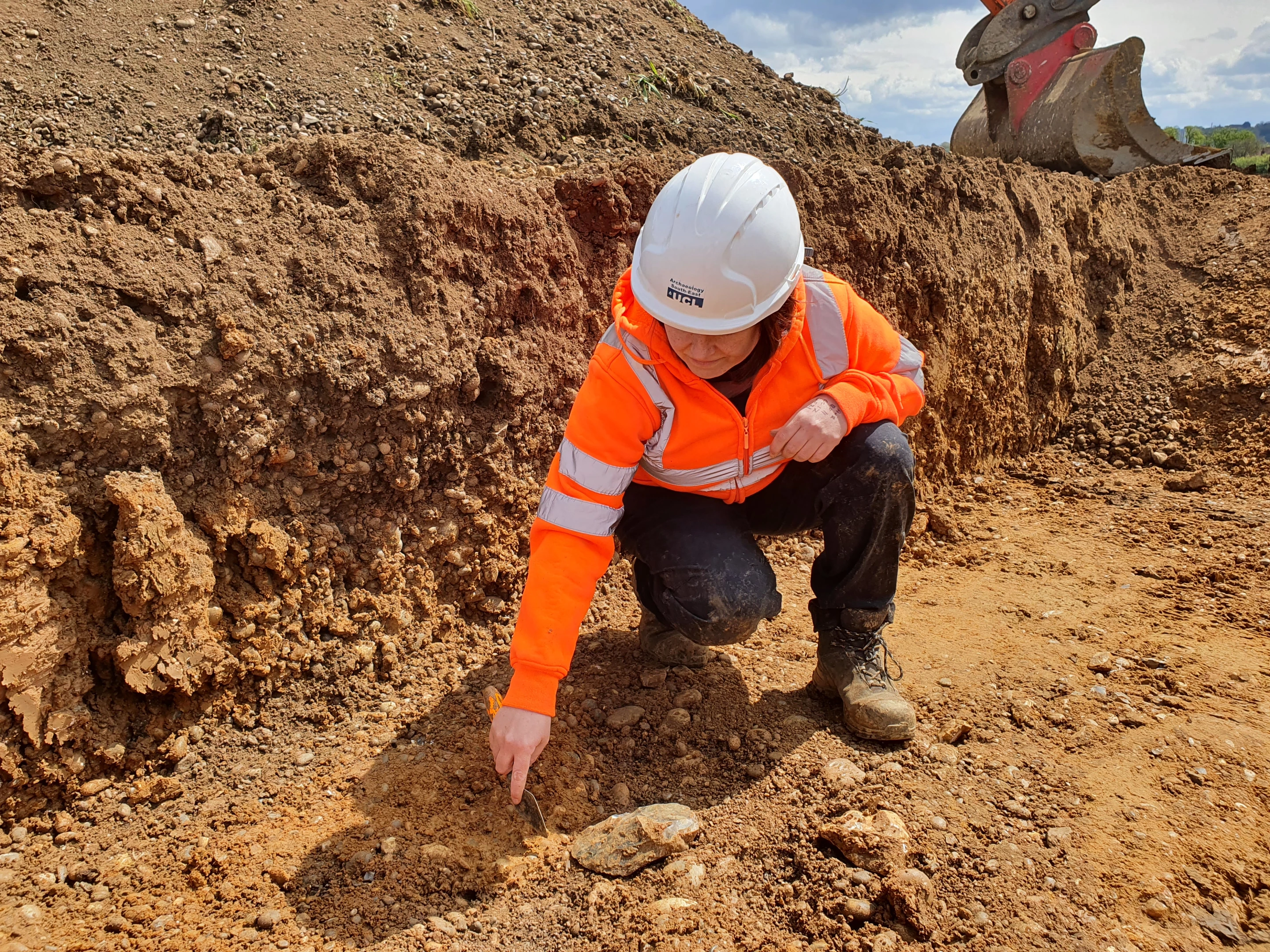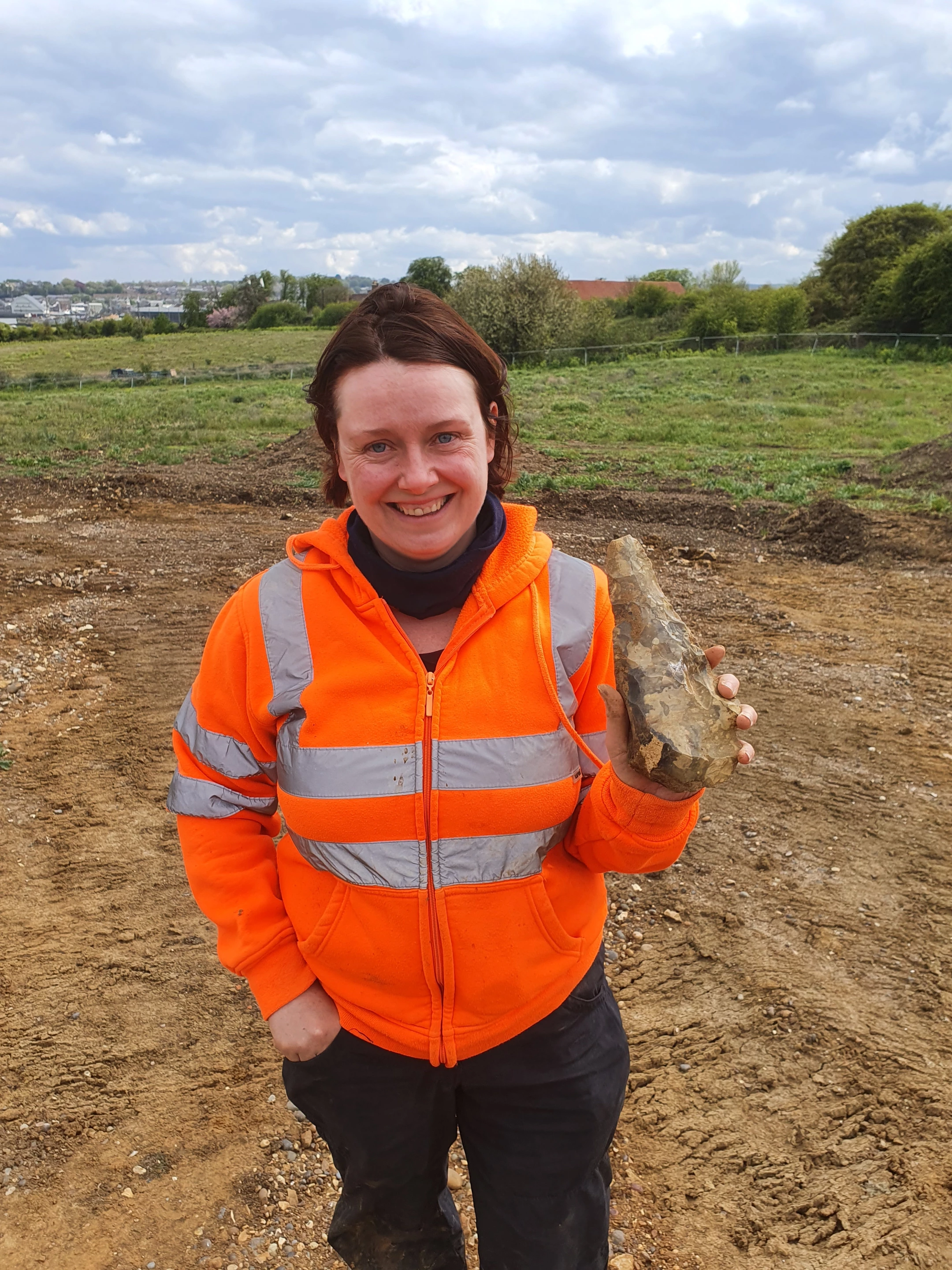Researchers from University College London's Institute of Archaeology have uncovered a cache of 800 stone artefacts dating to more than 300,000 years ago. The find includes one of the largest hand-axes ever unearthed in Britain.
The archeological excavation of the new Paleolithic site at Manor Farm in Frindsbury, Kent, began in early 2021, ahead of the development of the site into a new school called the Maritime Academy.
While digging into sediment thought to have been part of a tributary of the River Medway from the Middle Pleistocene age, a treasure trove of stone artefacts was unearthed – including two large flint hand-axes.
One of those – labeled Registered Find 50 – came in at a massive 230 mm (9 in) in length, though its tip was missing. But it was Registered Find 53 that really impressed, measuring 296 mm long (11.6 in), and sporting a thick butt end that gives way to an "extensively and carefully worked" blade-like tip with a shallow concave profile and sharpened edges that makes up around half of the roughly symmetrical tool's length.

For reference, Maritime number 53 is reckoned to be the third largest hand-axe found in Britain – with the undisputed champion being the "Great Hand Axe" discovered at a site in Furze Platt, Berkshire, which is reported to measure 395 mm (15.5 in) in length.
"We describe these tools as ‘giants’ when they are over 22 cm long and we have two in this size range," said the team's Senior Archeologist, Letty Ingrey. "The biggest, a colossal 29.6 cm in length, is one of the longest ever found in Britain. ‘Giant hand-axes’ like this are usually found in the Thames and Medway regions and date from over 300,000 years ago."
Back then, the area would have been home to "wooded hills and river valleys" with wild horses and red deer among the locals, and possibly even creatures such as straight-tusked elephants and lions. Hand-axes would likely have been used to butcher animals or slice up meat, though the UCL researchers do have doubts about whether this particular beast of a "ficron" – a type of hand-axe featuring a "distinctive symmetrical elongated tapering tip" – was employed in such a way.
"These hand-axes are so big it’s difficult to imagine how they could have been easily held and used," explained Ingrey. "Perhaps they fulfilled a less practical or more symbolic function than other tools, a clear demonstration of strength and skill."
At this point, it's an unknown. The team hopes that further examination of the artefacts discovered at the Maritime site will help shed more light on why such large tools were fashioned, along with identifying which species of early human knapped away at their edges.

"The excavations at the Maritime Academy have given us an incredibly valuable opportunity to study how an entire Ice Age landscape developed over a quarter of a million years ago," said UCL's Dr. Matt Pope. "A programme of scientific analysis, involving specialists from UCL and other UK institutions, will now help us to understand why the site was important to ancient people and how the stone artefacts, including the ‘giant hand-axes’ helped them adapt to the challenges of Ice Age environments."
A paper on the discovery has been published in the journal Internet Archaeology.
Interestingly, the same site yielded a second find in the shape of a Roman cemetery from between the first and fourth centuries CE. The remains of 25 individuals were recovered, around half of whom were cremated. Nine were buried along with personal items, and four were buried in wooden coffins. Pottery fragments and animal bones were found nearby, which are thought part of burial feasts.
Source: University College London









